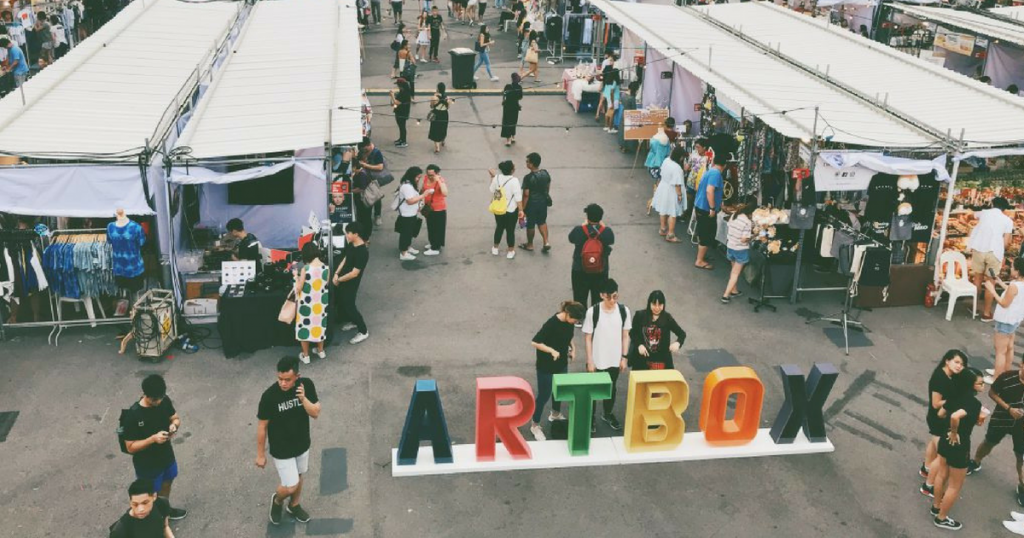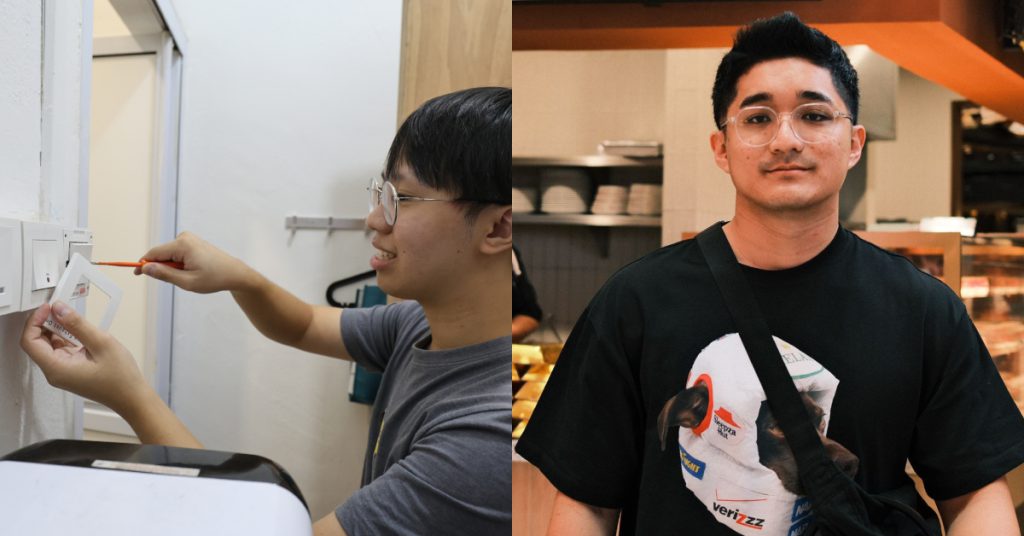Perhaps the most fun I had when I was young was visiting the pasar malam near my place to get my favourite mai ya tang (malt candy) and Dragon Beard Candy.
Those cost around 50 cents back then, and portions were generous. In my adolescent years, the prices doubled.
Over the years, food and products at bazaars are getting pricier and pricier, and carnival rides have come and gone and returned (looking at you, Marina Bay Carnival).
The astronomical price of rentals at places like the Geylang Serai Ramadan Bazaar have caused stall owners to jack up their prices and passing on those costs to customers.
Despite that, we still visit all these bazaars and night markets anyway because it’s a part of our Singaporean culture.
But pasar malam and carnivals don’t feel fun anymore when you have to spend over $30 just to feel satisfied in the belly and on the ‘gram. (These guys managed to spend under $30 at the Geylang Serai Ramadan Bazaar, and even then, they were rather regular bazaar fare.)
So I asked some vendors what are their thoughts on the rising costs of such events, and whether these are money well-spent.
High Bids During Tender The Main Cause

It was reported last year that the cost of rental at the Geylang Serai Bazaar reached $17,000.
A 24-years-old Mr Jay Kwek, selling fried Oreos and Thai Milk Tea, was cited to have rented two lots for $30,000. In 2016, it was $16,000 and in 2015 it was $10,000 for two stalls.
According to the report last year, the price of the rental depends on the location of the stall and the classification of the business, as retail stalls selling clothes cost up to $7,000.
This year’s rental at Geylang Serai Ramadan Bazaar has reportedly reached a dizzying $20,000 for a 2.7m by 2.7m food stall; retail stalls are paying an average of $9,000 for the same space.
Mr Mohamed Mustaffa Shah Jehan, owner of EnNiche Events who is one of the operators chosen by organiser Kampong Ubi CC, said that the high cost of rentals was caused by the “increasing bids during the tender for the bazaar” and the bids accumulated to a total of $3 million.
In 2017, stall owners blamed the contest between Venture Trade Fair and Ability Trade Fair, who each won one tender with a bid of $1.56 million and $1.79 million respectively, for the exorbitant rental.
The cost of the stall does not include overheads such as water, electricity, and manpower.

One owner of a food stall selling prawn vadai and briyani was quoted considering ending his stall’s 30-year streak with the bazaar as he lamented about the 80% increase in rent since taking over the stall from his family 15 years ago.
He revealed that water supply for one sink is $500, electricity bill ranges from $500 to $1,000, and he pays a total of $400 a day for the four workers he hired to help run the stall.
An article by Dollars & Sense calculated the cost of overheads at a food stall at Geylang Serai Ramadan Bazaar to come up to $10,600.

They spoke to a trio of young guys running the Tri Fries and found that to break even, they have to make about $13,000 in five weeks’ time, which means they have to sell more than 72 of their $5 Signature Tri Fries a day.
We learnt that $10,600 is the initial cost for setting up a stall in a place with lesser footfall and that can go up to $25,000 for areas that see higher traffic.
This year, a drinks stall owner noticed that the layout of the bazaar is much more spacious because there are lesser tenants as compared to last year, possibly due to the increase in rent.
But organisers Geylang Serai Citizens’ Consultative Committee (CCC) and Wisma Geylang Serai claimed that is because they have to compete with “other mega bazaars across the island”.
Despite the rising costs, existing stall owners interviewed by the Straits Times are still “optimistic about sales this year”.
The co-founder of Tri Fries said that while business is not good everyday, sometimes only making 10 sales an hour, it’s the experience that makes it all worthwhile for them as they chose to strike out on their own instead of taking on an internship.
For them, their biggest motivation is the sense of ownership they get when they reap their profits at the end of it all.
Entrepreneurs Still Think It’s Worth It

Still, I can’t help but feel annoyed that I have to pay $6 for a serving of mango sticky rice that’s not even made by actual Thai people, or get on a carnival ride that costs $14 for two minutes of exhilaration.
I thought that local vendors might feel the same way – about having to jack up prices just to cover costs or make a profit and risking the number of patrons to their stalls.

However, when I asked local entrepreneurs Inez Lim from Kittea, and Fyon from Common Touch Craft Unit, on their experience at Artbox this year, they gave positive reviews.
Inez shared that she rented her booth for an early bird price of $940 for one weekend, Friday to Sunday, stating that the usual price for a retail booth is $1,000.
“I was lucky as my stall was located near to the entrance, so there was a steady stream of traffic going past my stall. Thanks to some media coverage, there were also many curious patrons that came by to check Kittea out,” she told me.
She did not change the prices of her products and launched two new ones to test the market and said they “performed really well!”, adding that she profited from her tenure at Artbox.

Fyon couldn’t recall for sure the cost of her booth, but stated that it was between $700 to $800 for a retail booth for one weekend.
She thinks that response was “pretty good” and that it was better than last year. “Crowds were able to stroll through the market comfortably and also, there were sufficient spaces for foodies to queue!”
But Fyon admitted that their products are a bit more costly for a startup; a teacup is sold at $18 and a teapot is sold at $60. She revealed that they managed to break even this year.
Inez identified millennials as the largest demographics that patronised her stall.
For Inez, she thinks it’s because millennials are savvy and most of them requested to pay by PayLah! or by card.
“Artbox is best known for being a creative market where one can find things that are really unique and innovative. I think people come to Artbox with the desire to explore these creations – to try them out, to Instagram them,” she said.
“I felt really comfortable being a vendor at Artbox as I felt Kittea represented that creative spirit well, and I guess it shows when people purchase my products not only for themselves, but as gifts for their friends overseas.”

On the other hand, Fyon said the working class made up the bulk of her patrons.
“I believe it’s the idea of which our brand carries while promoting our merchandises,” she explained.
“The core value of Common Touch is to reach out to young designers and artisans, in collaboration to promote handcrafted pieces is the reason why audience are drawn to our brand.”
When asked if they would participate in Artbox again if it comes back the next year, Fyon said she would return.
“ArtBox is a good platform for young entrepreneurs to gain exposure while launching their brands and products,” she quipped.

Inez, though, has some concerns.
“I would probably participate if the rental cost doesn’t increase too much. It will be sad if rental costs get exponentially higher and are transferred to vendors, who then have to transfer the costs to customers. We will be self-sabotaging this growing industry.”
She did not participate in Artbox 2017, but she heard from other vendors that the number of visitors this year was “drastically different” from last year’s.
She continued, “This could be due to the combination of heavy rains, lack of strong advertising by organizers, and overall bazaar fatigue as there were other pop-up events happening during this time.”
“Perhaps next year, the creative market trend in Singapore will be so saturated, vendors will be spoilt for choice! If I have the opportunity to booth at a newer market, I would give Artbox a miss as I’m sure customers will flock to the new one.”
Overpriced ‘Hype’ Stuff Still Doesn’t Do It For Me

In the 2017 report of the cost of rental at Geylang Serai Ramadan Bazaar, Tay Khoon Hua, manager of Venture Trade Fair, said this, “Most of the food stalls are run by young people. They are not as concerned about the rent as they are about whether their products can attract crowds.”
At this point, from a startup owner or creator’s point-of-view, I can definitely see why participating in these bazaars and fairs would be beneficial for the business.
The hype surrounding these events would net them so much exposure that perhaps it’s true young people or vendors only care about the size of the crowd; because at the end of the day, no one wants to be left out.
While I still can’t justify spending that much for stuff that are marketed as unicorn sh*t, participating in flea markets and bazaars make the most sense for any budding entrepreneur to test the market for cheap.
As Mothership put it, “With increasing overheads, it’s no wonder every year’s bazaar seems to be trying to outdo the previous year’s gimmicky offerings to justify a higher selling price. And guess who’s paying for the extra costs?”
“You.”
As much as I want to #supportlocal, I don’t want to become a victim of blatant capitalism and a sheep in a pen of all things “Insta-worthy”.
What do you think?
Featured Image Credit: Discover SG










